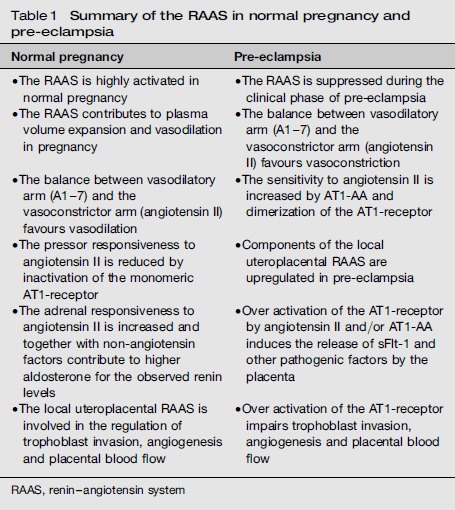Table 1.
Summary of the RAAS in normal pregnancy and pre-eclampsia

| Normal pregnancy | Pre-eclampsia |
|---|---|
| • The RAAS is highly activated in normal pregnancy | • The RAAS is suppressed during the clinical phase of preeclampsia |
| • The RAAS contributes to plasma volume expansion and vasodilation in pregnancy | • The balance between vasodilatory arm (A1-7) and the vasoconstrictor arm (angiotensin II) favours vasoconstriction |
| • The balance between vasodilatory arm (A1-7) and the vasoconstrictor arm (angiotensin II) favours vasodilation | • The sensitivity to angiotensin II is increased by AT1-AA and dimerization of the AT1-receptor |
| • The pressor responsiveness to angiotensin II is reduced by inactivation of the monomeric AT1-receptor | • Components of the local uteroplacental RAAS are upregulated in preeclampsia |
| • The adrenal responsiveness to angiotensin II is increased and together with non-angiotensin factors contribute to higher aldosterone for the observed renin levels | • Over activation of the AT1-receptor by angiotensin II and/or AT1-AA induces the release of sFlt-1 and other pathogenic factors by the placenta |
| • The local uteroplacental RAAS is involved in the regulation of trophoblast invasion, angiogenesis and placental blood flow | • Over activation of the AT1-receptor impairs trophoblast invasion, angiogenesis and placental blood flow |
RAAS, renin-angiotensin system
